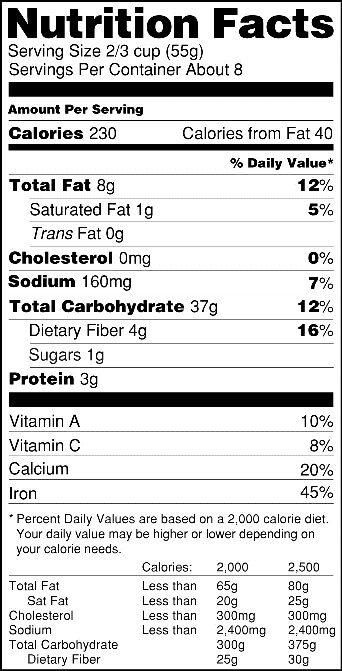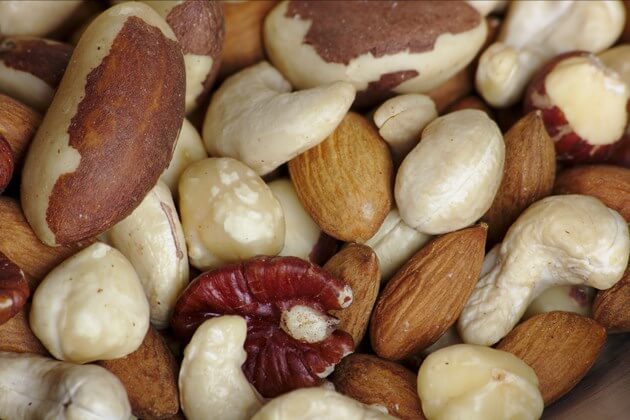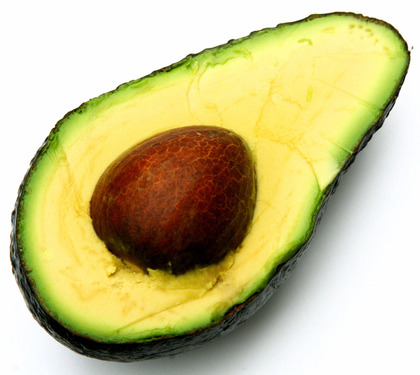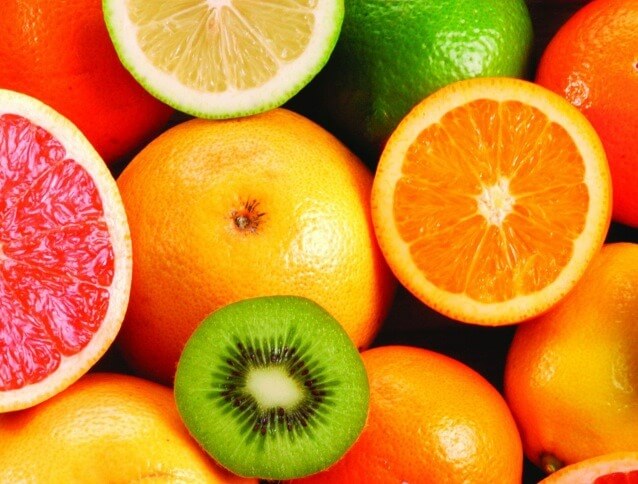Types of food
Basic knowledge of nutrition involves knowing which groups of food are there. Food can be divided into different categories in many different ways. Here we’ll take a look at pretty basic and most common one – the one that is shown in many food pyramids – division by ingredients.
- Fresh fruits and vegetables (great for your body and overall health; you can eat as many as you can of those).
- Nuts, grains, and beans (good for your body and overall health, excluding processed grains).
- Oils (plant-based oils are good for your body and overall health).
- Eggs (good for your body and overall health; intake should be somewhat limited).
- Meat and fish (not all are good for your body and overall health; intake should be limited).
- Dairy products (can cause more bad than good for your body; intake should be limited).
- Salt and processed sugar (salt can have some positive effect – should be limited; processed sugar should be completely avoided).
Health requires healthy food.Roger Williams
Now we are ready to take it to the next level. Let’s take a closer look at macronutrients and micronutrients since they are the ones that actually matter when it comes to food value.
What are macronutrients?
Those are basic components of food (large molecules). There are three types of macronutrients: carbon hydrates, proteins, and fats. All three types are extremely important for our body to function normally that is why we have to assure that the right amount of them is consumed each day.
However, each of those three types of macronutrients has many different representatives, and since not all of them are healthy we are ought to take it a bit further.

1.) Carbon hydrates
Carbon hydrates can be divided into three main categories: sugars, starches, and fibers. Furthermore, they can be either simple or complex, which depends on the food’s chemical structure and how fast they are digested and absorbed.
Came from a plant, eat it; was made in a plant, don’t.Michael Pollan
1.1.) Simple carbohydrates
Characteristics: quickly digested, they provide an immediate burst of glucose into the bloodstream which gives us short-term energy, followed by fatigue soon afterward. Not all simple carbohydrates are bad.
1.1.1.) Refined sugars (should be avoided as much as possible)
Negative effects: due to the calories they provide but the lack of vitamins, minerals, and fiber they can lead to weight gain, they can cause fatty liver, coronary heart disease, and diabetes.
Source: refined sugars (by itself, in candies, cakes, etc.; there is refined sugar in basically every processed food you buy).
1.1.2.) Naturally occurring (the ones you should eat, but their intake should be limited to certain parts of the day)
Those come full of fiber, vitamins, and minerals that are good for our body.
Source: fruits, milk
1.2.) Complex carbohydrates
Characteristics: slowly digested, they provide a lower steady release of glucose into the bloodstream. Not all complex carbohydrates are good.
1.2.1.) Refined grains (should be avoided)
Negative effects: due to the industrial process grains lose many nutrients and fiber they can lead to weight gain, to a lower extent than refined sugars they can also cause fatty liver, coronary heart disease, and diabetes.
Source: white flour, white rice
1.2.2.) Unrefined whole grains (the ones you should eat)
Positive effect: They contain many vital nutrients and are rich in fiber, which makes your digestive system work well. Since fiber helps you to feel full, you’re less likely to overeat that type of food. They provide your body with lasting energy, which can power you through the day.
Source: whole wheat, oatmeal, rye, barley, corn, popcorn, brown rice, wild rice, buckwheat, triticale, bulgur, millet, quinoa, sorghum, etc.
Carbon hydrates should make up about 45 – 65 % of your total daily calories (carbs have 4 calories per gram). In mass that is about 225 – 325 g of carbon hydrates per day. If you work out a lot your carbon hydrates intake can be easily up to 500 g per day. Since the excess of carbs is responsible for body fat buildup, we should do the best we can not overeat them.
2.) Proteins
Proteins are an essential part of every living organism. They are large molecules composed of one or more long chains of amino acids. There is not only one type of proteins either. By following a very simple division we can say that there are two types of proteins that occur in nature.
2.1.) Complete proteins
Characteristics: they contain all of the essential amino acids.
Source: mainly found in animal sources (e.g.: whey, dairy, eggs, fish, seafood, chicken, turkey, pork, beef, etc.) also in quinoa, buckwheat, hemp, chia, spirulina, and soy.
2.2.) Incomplete proteins
Characteristics: they only have some of the essential amino acids.
Source: mainly found in plant sources (e.g.: beans, legumes, whole grains, nuts, seeds, vegetables, fruits, coconut flour, etc.).

Even though complete proteins might seem better since they provide you with the full package of amino acids, that’s not true. You can easily get all of the essential amino acids just by eating a variety of food packed with incomplete proteins.
Furthermore, there are some known bad side effects that come with eating too much of animal proteins. Since meats are high in saturated fats, they can add to elevated bad cholesterol levels (see section below), which can lead to heart diseases.
Proteins should represent about 25 – 30 % of your daily calories intake (proteins have 4 calories per gram). On average adult women need about 40 – 50 g and adult men 50 – 60 g of proteins per day for their body to function normally. If you work out a lot your protein intake should be at least 50 % higher. But if you want to gain muscle then you can easily double those numbers.
3.) Fats
We’ll divide those into three categories according to their effect on the human body – the good fats, the bad fats and the ugly fats.
3.1.) The Good Fats
The Good Fats are monounsaturated and polyunsaturated fats. Those are the ones you should eat quite often since they’re the ones that have a positive effect on your body.
Positive effects: They can lower bad cholesterol levels, they can lower the risk of heart disease and stroke, and they provide the essential fats your body needs.
Source: plant-based liquid oils (e.g.: canola, olive, peanut, sunflower, and sesame oils), avocados, nuts, seeds and fatty fish (e.g.: tuna, herring, lake trout, mackerel, salmon, and sardines).

3.2.) The Bad Fats
Those are so-called saturated fats. They are bad for your health and their intake should be limited.
Negative effects: They can raise bad cholesterol levels, they can lower good cholesterol levels and they can increase the risk of heart disease and stroke.
Source: animal sources – meat (e.g.: beef, pork, chicken fat) and dairy products (e.g.: butter, cheese) and tropical oils (e.g.: coconut, palm kernel, and palm oils).
3.3.) The Ugly Fats
Those are so-called hydrogenated oils and trans fats. They are very bad for your health and their intake should be avoided.
Negative effects: They can raise bad cholesterol levels, they can lower good cholesterol levels, they can increase the risk of heart disease and stroke, and they can increase the risk of type 2 diabetes.
Source: processed food made with partially hydrogenated oils (e.g.: partially hydrogenated oils, some baked goods, fried foods, margarine stick, …)
There is something important you must remember: People don’t get fat by eating fat (in the macronutrient sense).
A person should consume between 20 – 30 % of daily calories intake (fats have 9 calories per gram) in the form of fat (the good fats). On average that is about 55 – 83 g of fat per day.
Non-macronutrients

There is one extremely important ingredient we haven’t mentioned yet – water. It is so important that it deserves its own category since the water provides the medium for all metabolic processes inside our body. It is a non-macronutrient since it doesn’t provide any nutritional value by itself. However, there are micronutrients that can be found in it due to natural processes or human interference. THERE WOULD BE NO LIFE WITHOUT THE WATER:
Water is the driving force of all nature.Leonardo da Vinci
What are micronutrients?
There are two types of micronutrients: minerals and vitamins. Our body needs them in really small amounts however, they play an important role. They affect human development and well-being in many different ways, that’s why the lack of micronutrients can have a severe impact on humans.
There are many different vitamins and minerals that our body needs. We divide vitamins into two categories: water-soluble (must be replaced on daily basis; e.g.: B-complex and vitamin C) and fat-soluble (they accumulate within the body so we don’t need them every day; e.g.: vitamins A, D, E and K).

There are also two forms of minerals: macrominerals (needed in larger amounts; Calcium, Magnesium, Phosphorus, Sodium, and Potassium) and micro minerals (are only needed in trace amounts; Copper, Zinc, Fluoride, Iron, and Iodine).
Main sources:
- vitamin C: oranges, peppers, broccoli, lemons, and bananas;
- vitamin B-12: beef, fish, cheese, and eggs;
- Potassium: spinach, potatoes, apricots, and bananas;
- Calcium: yogurt, spinach, milk, and sardines;
- Zinc: beef, garbanzo, beans, turkey, and cashews.
Micronutrients are something you don’t even have to think about if you’ll eat the right kind of macronutrient.
